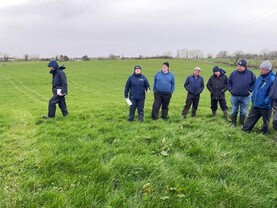The recent announcement by the main co-ops of their grain prices brings an end to a long period of uncertainty over where the price to Irish growers would eventually settle.
Most people, I suspect, are relatively at ease with the prices set by Dairygold and Glanbia (or Tirlán as it is now).
The focus is to get the winter cereals planted as quickly as possible. The year is moving on and the normal settled spell that we expect in mid-October is not yet in prospect.
On Monday we began sowing the winter barley. This is later than usual and is an effort to control take-all given that it is following wheat.
I see sensible comments from Dairygold’s Liam Leahy on the national drop in winter barley acreage following the disappointing yield and quality in much of the 2022 crop.
In sync
We were also affected but having thought about it, we need the winter barley as a lead-in to oilseed rape, which then leads into the gluten free oats, so if one leg of the rotation gets out of sync, a less optimum one results.
So we will stick with the winter barley and take what steps we can to reduce the risks of take-all and barley yellow dwarf virus. This is the first year I have seen some wheat sown before winter barley.
We have brought in the first of the cattle for finishing out of the shed. They are the most forward still out on grass and we will supplement the silage with our own barley.
Perhaps we should have sold it along with the rest of the grain, but given the prices set by the main buyers, it’s hard to see grain being cheap over the winter.
The choice is between finishing cattle using our own production or changing the system completely and putting everything out to grass and not buying in stores. We will opt for stability.
We will get the silage tested within the next few days and I suspect we will supplement what I know is a wet product with some hay which we made in early July.
While my diet feeder will chop straw comfortably enough, I find that even with the heavy duty knives we got fitted in the floor of the feeder, hay still tends to wrap itself around the centre shaft to which the paddles are welded.
Nevertheless we have a lot of hay and will use as much as we conveniently can.






 This is a subscriber-only article
This is a subscriber-only article










SHARING OPTIONS: